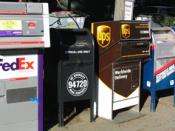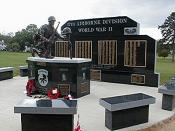1)Airborne's performance from 1986-1997 can be described as dismal. Throughout the period the company managed to remain profitable every year, but they underperformed the McGahan averages. Airborne averaged 1.72% ROS (including 1997, which was an outlier for this set), 2.46% ROA, and 9.34% ROE. This was compared to the ROS, ROA, and ROE of 4.7%, 5.9%, and 12.6%, respectively. Airborne also had lower margins than its competitors, FedEx and UPS, so it can be inferred that Airborne's performance is poor not just in general but also considering the industry. It should be noted that the industry leader, FedEx, could not consistently beat the averages either, so the industry is not earning large margins to begin with. However, UPS does consistently beat the averages, so Airborne should not be entirely excused due to its industry.
The strategy seems to be low-cost, broad based. Based on Exhibits 1 and 8, it is obvious that Airborne is charging lower prices than the competition.
This is only half of the low-cost strategy. It would at first appear that Airborne is simply charging lower prices, but has not developed a lower cost structure because its margins are so low. However, there is evidence to support a lower cost structure as well. First of all, it would be quite difficult to have a similar cost structure and even turn a profit if one looks at the FedEx comparison in Exhibit 1. This is not the only evidence of a low cost strategy. At first glance, it appears that Airborne may not have a lower cost structure because of the size of their Depreciation cost versus revenue. Because Depreciation was the only cost that was present in the Financial Results Exhibits for all three companies, it has to serve as the number for comparison. Versus...


